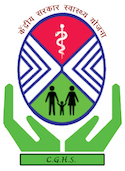Gynaecology is the system of the treatment for the female reproductive systems. The organs of female reproductive system help in the wonderful and most significant role of reproduction. Therefore the motherhood of a woman belongs to this system alone. Secondly, this is not just one system. In female health this system plays a pivot role too. Health of a female depends on the wellness of this system. Any disturbances in this system leads to the complications with the complete health of a female.
Bhavprakash Nighantu, a book of Ayurveda mentions that- a female with normal and natural menstrual cycle will never be a diabetic.
This shows the importance of the Gynecological wellness for complete wellness.
Ayurveda has in depth knowledge about gynecological health. And here we need to understand the importance of Ayurveda in many ways. These are few points which torches on the importance of the Ayurveda treatment for gynecological conditions-
- Regularly multiplying cases of the Female Infertility
- High ratio of the Gynecological cancers.
- The rate of REMOVAL Of Uterus in young age.
- Hormonal Diseases like – PCOD!!
These four points talk about the failure of the modern conventional system of medicine to deal with gynae diseases. Thus we need to return to roots. Here we will talk about the utility of Ayurveda treatment in gynecological diseases.
About Female Reproductive System
As we know the process of the reproduction needs highly sophisticated skills in these organs. Because without the specialisation, it is not possible to talk about the healthy fertility and healthiest-next-generation.
The female reproductive organs classifies in two parts- external and internal organs.
External Reproductive Organs
The external genital organs are highly specialise for the following works-
- These provides passage for the sperms to the internal parts.
- External organs help in protecting from infections, therefore provides security to the internal organs.
- These also important role in sexual pleasure
These parts are-
Mons Pubis:
This is fatty round hump on the pelvis bone , covered with pubic hairs. This part contains sebaceous glands. These glands secrete pheromones.
Labia Majora and Minora
These are skin folds which cover the opening of the vagina and urethral opening. These are sensitive to touch and secret the oily substance.
Bartholin glands
A pair of bartholin glands is there in the list of external organs. These glands are located on the sides of the vaginal opening. One on each side.
Internal reproductive system
- Vagina: This is a small canal which connects the external and internal organs. This canal is – vagina. The primary function of vagina is to provide a path for birth; therefore, also called the birth canal.
- Uterus and Cervix: This is the most critical organ as it develops the fetus. This is pear-shaped and hollow in appearance. The cervix part of the uterus is helpful in the entrance of sperm and exit of menstrual blood. The lower part of the uterus which connects it with Vagina is – Cervix
- Ovaries: The primary function of ovaries is to produce eggs and release hormones required for the whole process. Ovaries are oval and small in shape.
- Fallopian tubes: It provides a path to ova to travel from ovary to uterus. Fertilization of egg and sperm mostly occurs in fallopian tubes only.
Menstrual Cycle
The menstrual cycle is of 28 days and has a Follicular, ovulatory, and luteal phase. This cycle is a monthly process of preparing the uterus for pregnancy by thickening the uterine lining of blood vessels. Different stages have varied levels of Hormones like estrogen, progesterone, and luteinizing hormone.
In the follicular phase, 15-20 eggs grow and become follicles. Out of them, only one mature and flows in the fallopian tube to fertilize. On the 14th day of the cycle, the hormones are on hike and help in releasing ova. This process is – ovulation, and the phase is- ovulatory phase. Lastly, in the luteal phase, progesterone plays a significant role and prepares the uterus for implantation and pregnancy.
Gynecological Diseases
- Heavy Periods: In this case, the periods remain for more than 7 days, and bleeding occurs in unusually high frequency. This results in anaemia, causing weakness and tiredness. There can be many reasons for heavy periods like fibroids, hormonal misbalance, and uterine disorder.
- Infertility: Infertility is the problem of not getting pregnant despite doing unprotected sex over a year. There are many reasons for infertility, and it is hard to determine. The problem can be in males as well as females. Medical conditions, hormonal imbalance, ejaculation disorders are some of the reasons for infertility.
- Irregular Periods: In this, periods are not regular according to 28 days cycle. But either delay or misses. There can be various reasons, like stress, hormonal issues, or genetics.
- Leucorrhoea: Leucorrhoea: It includes heavy vaginal discharge. The discharge is thick, yellow, with a foul smell. Reason can be hormonal imbalance or certain infections.
- PCOD: This is a kind of a hormonal imbalance in which numerous cysts appear on the outer lining of ovaries. Symptoms include excessive hair growth, acne, irregular periods, and obesity.
- Uterine Fibroids: Fibroids are the tumour-like growth in the uterus. They are majorly in the myometrium. These fibroids are benign or non-cancerous in nature. They usually don’t show any symptoms, but some include pelvic pain with irregular and heavy periods.
Ayurveda about Gynecology
Ayurveda talks about the gynecological health in great detail. Thus we can find a complete detail description about organs, working of the system and its diseases.
Ayurveda talks about a simple yet proper structural explanation of the gynecological organs. Here is a brief about this explanation-
Ayurveda about Gynecological organs
According to Ayurveda, the nomenclature of organs includes; Bhaga to the vulva, Smarata Patra to the clitoris, Yoni to the vagina, and Garbhashaya to the uterus.
Ayurveda believes that a sound generation can be brought when the zygote formed will be healthy. Different phases in women’s lives are dependent on doshas like Vata, Pitta, and Kapha. Various hormones control the process of ovulation, conception & menstruation with endometrial changes. It is possible by proper nerve and blood supply. Some essential processes like implantation, fertilization, and nutrition of a fetus occur in the uterus. Injury caused in Artavavaha Srotas results in many diseases in problems like infertility, irregular periods, and uterine fibroids.
Artava as Menturation
Ayurvedic scholars detailed, the process of menstruation as- Artava. This process is similar to the modern day explanation in terms of – cycle, days and details. Because the female health revolves around the hormones therefore Ayurveda gives full importance to this process.
Aartava Vaha Srotas
This shows the physiological-anatomy of the process of menstruation and pathology too. The concept of srotas in Ayurveda details about the different channels. These channels shows the physiological process. Thus when there is some disturbance in the process, this leads to the disease.
Doshas as per Age of a Female
With Gynecological diseases, this is the most important concept in discussion in Ayurveda. Ayurveda recognizes the hormonal changes in a female. Therefore dominance of different doshas is discussed in Ayurveda in context of females.
So in nutshell, Ayurveda understands the normal and abnormal – both kind of activities of the gynecological system. And perhaps this is the reason, why Ayurveda is more practical in treating the gynecological diseases. Because modern medicines is just concerned about the surgical manoeuvres in every condition and disease, therefore it becomes important to consider Ayurveda for treatment of Gynecological diseases.
Eventually, the time has come that we all need to understand the importance of the Ayurveda treatment. So that we can avoid these unnecessary surgeries.
How Ayurveda can better help with the condition?
Ayurveda treatment always believes in dietary management. It includes the food that boosts the Ojus. Ojus is responsible for energy and healthy living as it is the factor that affects mental, spiritual, and physical health. Ovulation and fertilization is regulated and enhanced by dietary management. Hormonal level of the body is also affected by the food and nutrients of the body.
Excessive fats, carbohydrates & starch affect the hormonal balance of the body. This imbalance leads to diseases of the reproductive system. Fertility is affected and destroyed by processed, canned food. An Ayurvedic treatment to cleanse the body profoundly is known as Panchakarma. Panchakarma is a simple approach to treatment that reverses the adverse effects. It cleans and restores the health and wellness of the body. Tension and impurities are removed by Ayurvedic medicines. Herbs also play a vital role in treating reproductive diseases by Ayurvedic medicine. Some most popular and common herbs used are:
- Dashmoola, Shatavari, Ashoka, Aloe vera, Guggulu, etc. for Ovulation disorder -.
- Shatavari, Guduchi, Ashoka, Dashmoola,, Jeevanti, etc. for Premature ovarian failure (POF)
- Guduchi, Punarnava for scar tissues, blocked fallopian tubes, and pelvic inflammatory diseases.
Limitations of western medicines in treating the system
Limitation of western drugs used for treating gynaecology problems includes:
- The high cost of medication: Medication of diseases like irregular periods, fibroids, and PCOD is very costly. These medications are hormonal pills that tend to be of high price in the market. Moreover, in severe cases, surgeries are also done, which can be prevented in Ayurvedic treatment.
- Side effects of hormonal pills: The pills provided for regular menstrual have many side effects like nausea, vomiting, and headache. It also increases the chances of infertility and breast cancers.
- Steroids affect other organs of the body: Steroids available in the medicine have a very wrong effect on organs like the pancreas and liver. These are heavy to digest and cause severe problems to vital organs of the body.
The root cause is not eliminated: Ayurveda looks for the root cause of any disease and removes it, whereas, in modern medicine, treatment is given on the visible symptoms to avoid them. They are prevented not cured by modern medicines.













